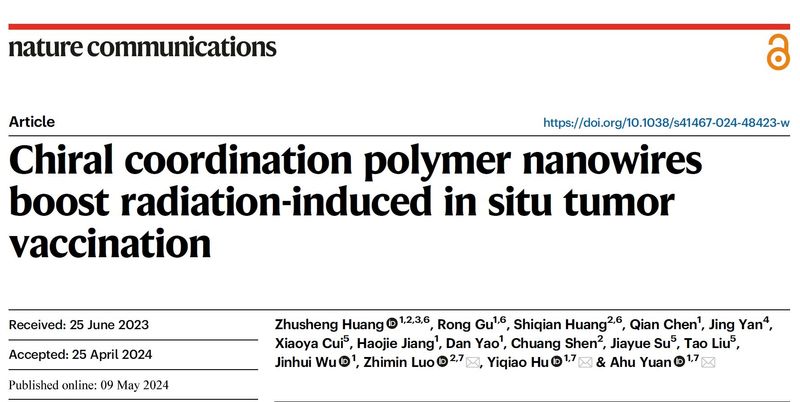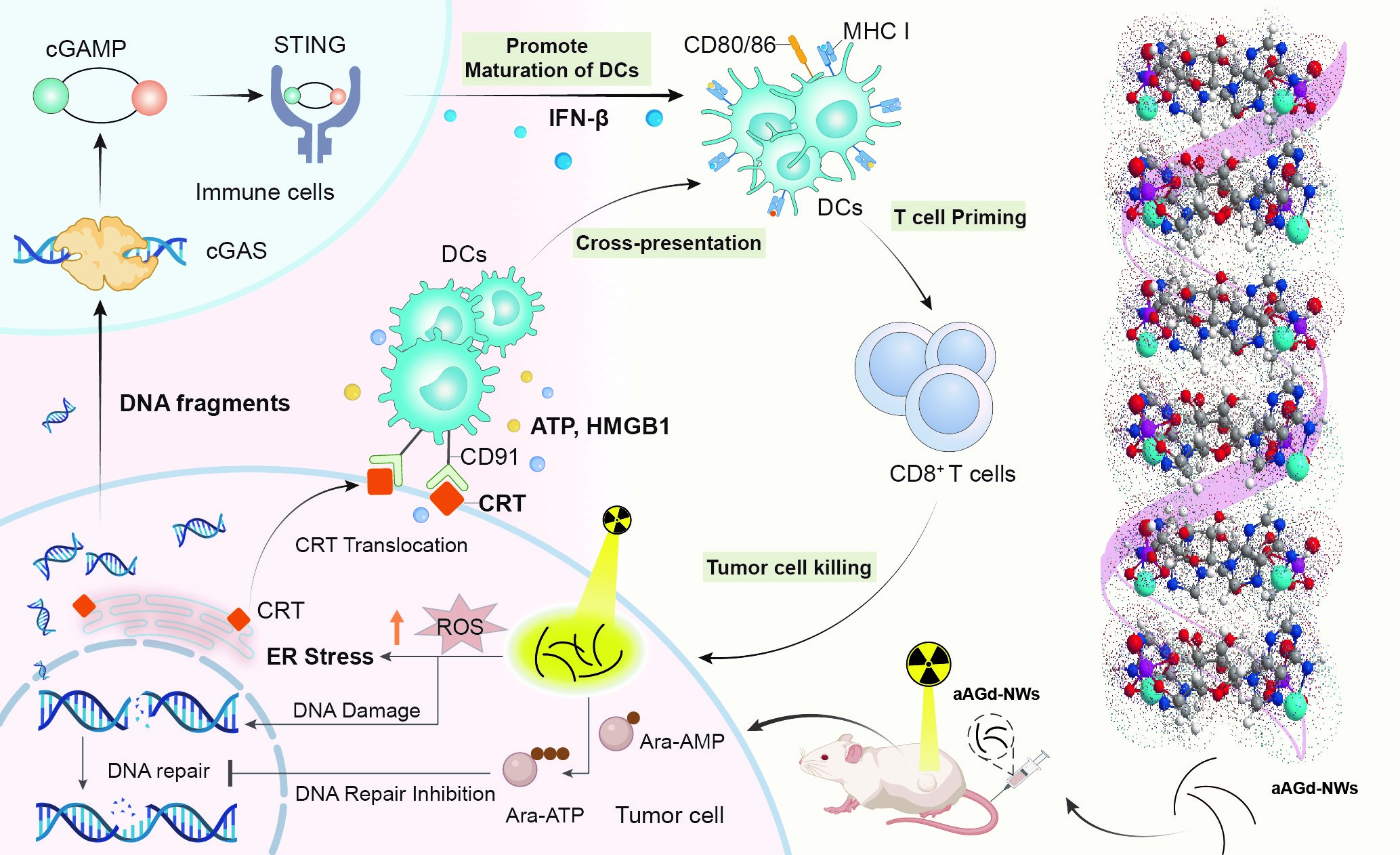Recently, Professor Zhimin Luo from the State Key Laboratory of Organic Electronics and Information Displays (SKLOEID) and the School of Chemistry and Life Sciences at Nanjing University of Posts and Telecommunications (NJUPT), in collaboration with the Nanjing University, has achieved a research progress in chiral nano-adjuvants and in situ tumor vaccines. The relevant findings were published under the title Chiral coordination polymer nanowires boost radiation-induced in situ tumor vaccination in the international academic journal Nature Communications.

The Latest Research Progress in Chiral Nanoadjuvants and Tumor in situ Vaccines by the Research Team from NJUPT Published in Nature Communications.
Professor Zhimin Luo, Professor Yiqiao Hu and Professor Ahu Yuan who come from the Nanjing University, are the corresponding authors. The faculty member Zhusheng Huang, postgraduates Rong Gu and Shiqian Huang from the School of Chemistry and Life Sciences are the co-first authors of the paper. Dr. Xiaoya Cui, Dr. Jiayue Su and Professor Tao Liu from the Tsinghua University have provided strong support for cryo-transmission electron microscopy characterization and structural analysis.
Radiation therapy for tumors is akin to administering an endogenous in-situ vaccine. However, the effect of this radiation-induced endogenous in-situ vaccine is extremely weak, barely able to induce a systemic anti-tumor immune response. Based on clinical antiviral drugs (Vidarabine Monophosphate) and MRI contrast agents (gadolinium ions) through coordination self-assembly and phase control techniques, the team developed chiral Vidarabine Monophosphate (ara-AMP) Gadolinium nanowires (aAGd-NWs) to enhance the tumor in-situ vaccine effect induced by radiotherapy. With the assistance of Dr. Xiaoya Cui , Dr. Jiayue Su, and Professor Tao Liu from the Tsinghua University, the team used cryo-transmission electron microscopy to resolve the structural characteristics of aAGd-NWs, including ultrafine morphology, surface coordination, and right-handed helical chirality, elucidating the mechanism of chiral self-assembly of aAGd-NWs. Biologically, aAGd-NWs not only enhance X-ray deposition and scattering, increasing the sensitivity of radiotherapy, but also effectively inhibit tumor cell DNA self-repair, activate the cGAS-STING pathway to promote the secretion of type I interferon, and increase the infiltration of CD8+ T cells in tumor tissues. And synergistic immune checkpoint blockade therapy could significantly further enhance the in-situ vaccine effect induced by radiotherapy.

Chiral Coordination Polymer Nanowires Boost Radiation-Induced In Situ Tumor Vaccination
The application of cryo-transmission electron microscopy has provided new insights into the structure and formation mechanisms of novel nanomaterials. The strategies of drug repurposing and drug self-delivery will offer enormous possibilities for radio-immunotherapy and clinical translation. This work was supported by the National Key Research and Development Program, the National Natural Science Foundation of China, key and general projects of Jiangsu Province universities, the Director's Fund of the State Key Laboratory of Organic Electronics and Information Displays, and start-up funds for introducing high-level faculty and scientific research at NJUPT.
(Written by Zhusheng Huang, Initially Reviewed by Zhimin Luo, Wen-Yong Lai, Zuqin Qiao, Zhikuang Cai, Edited by Cunhong Wang, Reviewed by Feng Zhang)



